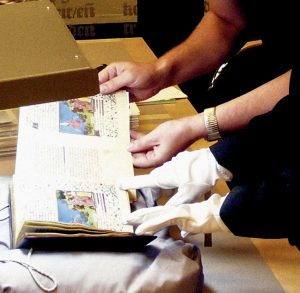“Sensim per partes discuntur queliber artes.
Artis pictorum prior est factura colorum.
Post ad mixturas committat mens tua curas.
Hoc opus exerce, sed ad unguem cuncta coherce,
Ur sit adornatum quod pinxeris et quasi natum.
Postea multorum documentis ingeniorum
Ars opus augebit. […]”
(“All arts are taught by degrees.
The first process in art of the painter is the composition of colours.
Let your mind be afterwards applied to the study of the mixtures.
Practise the labour, but restrain all things with precision,
that your painting may be beautiful and natural.
Your artistic skill will afterwards be increased
by the descriptions of many inventions. […]”)
from: “Schedula diversarum artium” (also: “De diversis artibus”) by Theophilus Presbyter (between 1100 – 1120)
Theophilus Presbyter, a Benedictine monk and writer of an essay in Latin about the arts and crafts techniques, compiled in three books, describes in the preface of his first book, – which covers the production and the use of paitning and drawing materials (painting techniques, paint and ink), with special reference to book illumination and wall painting -, the importance to detail and that you have to get to the bottom of things in order to achieve positive results.
We take this also to our heart and restrain all things with precision, especially when it comes to the paint mixture, with the aim to exactly reproduce the original colours. In former times the paint manufacturing was a laborious process and thanks to the invention of photography and digital impression it is possible nowadays to realize a faithful reproduction of a manuscript, or a book.
Even though the process of colour extraction and manufacturing was simplified over time, we do not lose the focus for the detail. For every facsimile production all pages of the manuscript are meticulously photographed, measured and processed for the printing. On the basis of this colour separation first test prints are prepared and continousily compared and adjusted with the original, until the colours match exactly the original manuscript. Only then the real printing will get started.
Read more about how we produce nowadays a faithful facsimile.



